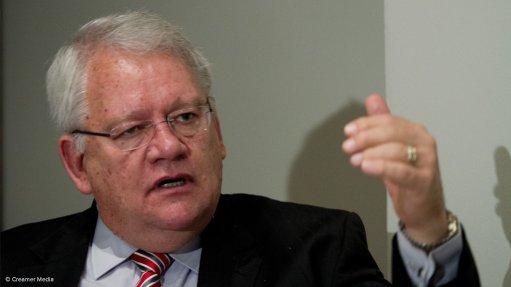
Gautrain CEO Jack van der Merwe
Photo by: Duane Daws
The successful implementation of transport infrastructure megaprojects rests on four equally important “pillars”. So affirmed Gautrain Management Agency CEO Jack van der Merwe to the recent sixth Council for Scientific and Industrial Research Conference, in Pretoria.
These pillars are: political will and commitment; a viable project, with the base case design including the required technical, financial, legal and institutions elements; funding – for both the actual infrastructure and for operating it, once it is completed – including (in the case of a public-private partnership or PPP) both the government and private sector contributions; and community-acceptance and “buy-in” (influenced by both the socioeconomic benefits of the project and the need to expropriate land to build it on).
He highlighted that these types of project usually take 14 years from conception to entry into service. They are also usually intended to meet a range of objectives (to help justify their costs).
In the case of the Gautrain, for example, it was intended to promote economic growth, stimulate investment (both local and foreign), facilitate new development and create jobs, as well improve public transport and reduce travel time, distances and costs. It was further expected to assist tourism and the development of businesses, especially small, medium-sized and micro-, and broad-based black economic empowerment-, enterprises.
In a transport infrastructure PPP, the government establishes the long-term vision, provides the land, passes the necessary legislation, provides subsidies and guarantees the rights of way. The private sector supplies access to the capital markets and financing, provides design and construction innovation and carries out the operation and maintenance. The argument about the cost of such projects is not usually about how much money is required but rather what other projects and programmes could be funded with that money.
In return, the government gains tax revenues, improves the mobility of the population, encourages economic development, achieves socioeconomic benefits and gains life-cycle funding. The private sector wins design and construction contracts, operating contracts, revenues, the servicing of debts and profits.